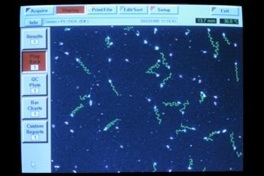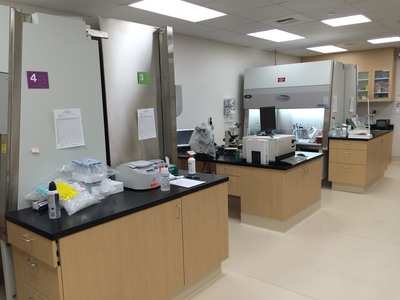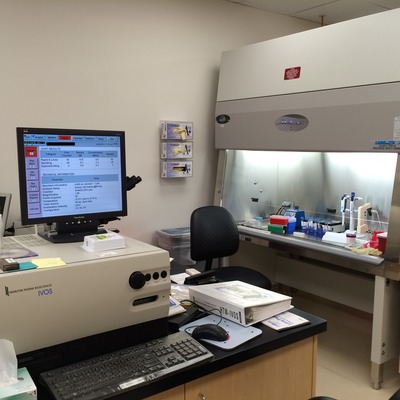% Motility: The percentage of sperm with their tails moving. This value is determined by manual counting of at least 200 sperm observed under 400x phase contrast optics. Other observations are made at the same time, such as sperm agglutination and presence of round cells.
Reference Range: ≥ 40%*
% Progressive Motility: Sperm that are swimming from one place to another (not just twitching or going in small circles). Determined using Computer Assisted Sperm Analysis (CASA), with digitized images of sperm, and by manual counting. Non-progressively motile sperm are not likely to be involved in fertilization; they normally comprise a very small percentage of sperm, but in some cases can be common. In these cases, the % Progressively Motile sperm is much more important than % Motility.
Reference Range: ≥ 29%*
% Rapid & Linear Motility: Sperm swimming at least 25 microns per second, with a fairly straight path (≥60% Linearity). Research shows that these sperm, usually about 10-25% of all sperm, are the ones most likely to get through the cervical mucus into the uterus and tubes. Determined by CASA and by manual counting.
Reference Range: ≥ 10%

Computerized Motility Analysis and Motility Enhancement: Objective measures of sperm kinematics (motion characteristics, including velocity and linearity) in semen. Poor sperm motility in semen may be improved by Motility Enhancement in about 25% of cases, suggesting biochemical deficits (particularly of ATP production and its conversion to cyclic AMP) in sperm. We use a Hamilton-Thorne IVOS sperm motility analyzer for these analyses.
Live/Dead (Viability) Test is performed if fewer than 25% of sperm are motile. Many non-moving sperm are alive, but unable to swim due to a biochemical or structural problem. This is a test of the sperm’s membrane permeability. Live sperm can exclude external compounds, such as dyes. Dead sperm become stained.
Reference Range: ≥ 50% Live*
*Reference: World Health Organization 2021 WHO Laboratory manual for the examination and processing of human semen. WHO (6th ed.). Values are the lower 95% Confidence Interval of the 5th centile of all subjects whose partners conceived within 12 months. All other Reference Ranges are MFL Ranges.

